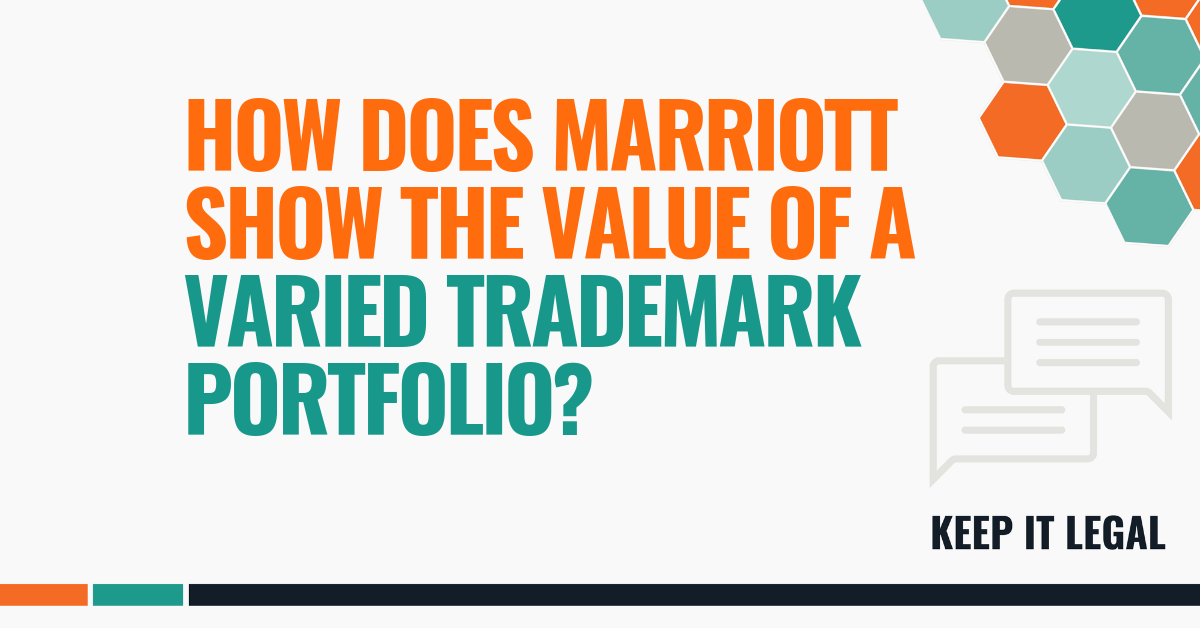Recently Josh Barro wrote an article in New York Magazine asking “Why Do Hotel Companies Have So Many Brands?” The article begins:
In 2016, Marriott Hotels, which had 19 hotel brands, merged with Starwood, which had 11. They didn’t abolish any brands in the merger, and so the company faced a challenge: How to explain to customers, or even to its own employees, what makes all 30 of these brands different from each other.
That’s right – Marriott alone has 30 different hotel brand names (or “flags” as they apparently call them in the hotel industry). These include Marriott, Sheraton, The Ritz-Carlton, Westin, W, Courtyard by Marriott, and even something called Moxy (more about that one later).
From a legal standpoint, each of these brands is a separate trademark. Here’s the United States Patent and Trademark Office trademark registration for MOXY for “Hotel services and reservation services for hotel accommodations for others”.
Each of these hotel brands is intended to appeal to a different slice of the traveling public:
Your regular Marriott is a “classic premium” hotel, while a hip W Hotel is “distinctive luxury,” and a value-priced Fairfield Inn is “classic select.”
But doesn’t it cost a fortune for Marriott to maintain all of these trademarks? Why not just call them all “Marriott” and save all the cost and trouble? Barro answers:
One of the main costs of operating several nameplates within one car company is that each must be marketed separately. The more brands GM has, the more television ads it has to run. But major hotel companies these days do very little marketing of their individual brands, focusing instead on building customer loyalty to the umbrella brand.
…
That is, Marriott doesn’t have to spend a lot of money to educate the public about, say, Moxy Hotels. Marriott can just spend money to convince people to book at Marriott.com, where it can show off all its brands at once, including Moxy.
This is a good point. In the olden days, when you were planning a trip, you’d have to call up the local Westin or Ritz-Carlton to see if they had a room available. Now companies like Marriott can direct everyone who’s going anywhere to Marriott.com. Once you’re on their site, they can use what they know about you (which is a lot) to direct you to the Ritz-Carlton or Sheraton or Moxy, if you’re that kind of traveler.
A Side Trip Into the Moxy Story
So what is Moxy anyway?
Moxy is “a playground that attracts Fun Hunter travelers and is designed to give guests everything they want and nothing they don’t at an affordable price,” according to Marriott. Moxy hotels have small rooms, but they’re balanced out by lively common spaces that encourage interaction.
While researching this post, I learned that there’s a Moxy hotel about three miles from my office…I guess I’m not a “Fun Hunter”.
OK, but what does the word “moxy” mean? The answer involves some trademark trivia.
“Moxy” doesn’t appear in Merriam-Webster’s online dictionary. But its homonym “moxie” does. “Moxie” means energy, pep, courage, determination, and know-how. And where did the word come from? According to M-W, the word “moxie” comes “from Moxie, a trademark for a soft drink”. That’s right, a soft drink company invented this word, which made it into our language even though the original manufacturer has long since stopped making the soda.
But that’s not all…a few months ago, Coca-Cola re-launched Moxie soda, allegedly using the authentic original formula. How were they able to do that? Presumably because it was a Zombie Trademark.
The drink is currently only available in Maine, and sadly there are currently no Moxy hotels in that state, so I guess Moxy’s Fun Hunter travelers will have to settle for a less energetic and peppy cola.
Back to the Trademark Takeaways
So what can business owners take away from the tale of Marriott and its 30 brands? Although we may think of a hotel conglomerate as a very real-world type of business, the New York Magazine story reminds us that Marriott doesn’t actually own most of its hotels. Marriott simply licenses the trademarks to local hotel owners and runs the Marriott.com website. Any business with an online component can consider establishing multiple brands to address different market segments. Leveraging trademark law to protect and strengthen those brands is, of course, an important step in that process.
Want to protect your trademarks? Reach out to me.


